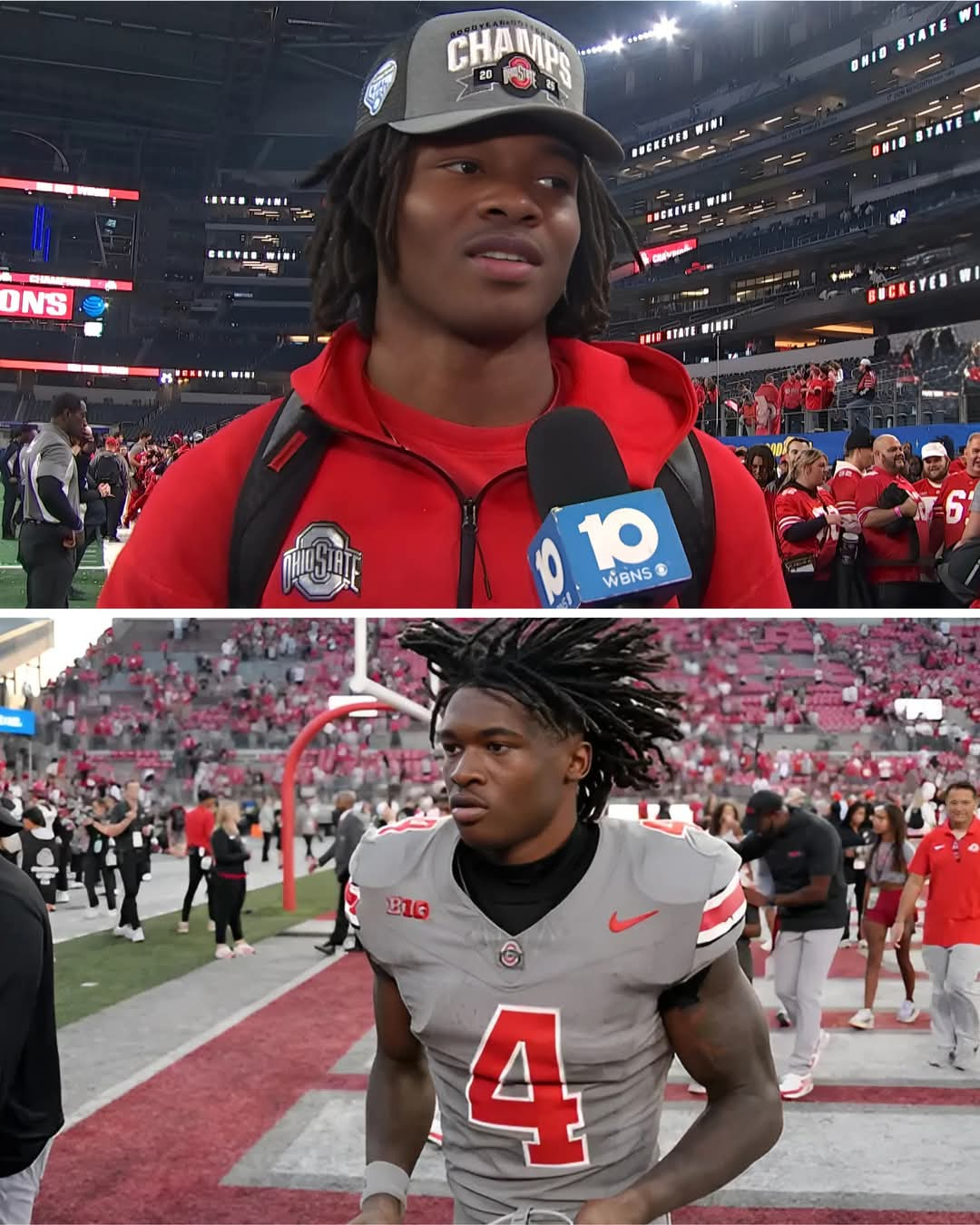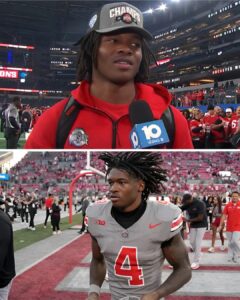
 Jeremiah Smith, one of Ohio State’s top recruits, has made headlines for more than just his on-field skills. The five-star wide receiver recently signed a staggering $3.7 million NIL (Name, Image, and Likeness) deal, just ahead of the National Championship game.
Jeremiah Smith, one of Ohio State’s top recruits, has made headlines for more than just his on-field skills. The five-star wide receiver recently signed a staggering $3.7 million NIL (Name, Image, and Likeness) deal, just ahead of the National Championship game.
While many have celebrated the deal as a significant financial milestone for Smith, the timing of the announcement has sparked a mixed bag of reactions from fans, analysts, and stakeholders in the college football world. The situation has reignited the debate over the growing influence of NIL deals in college athletics, raising concerns about their potential to impact player performance and the integrity of college sports.
The Signing of the Deal
Jeremiah Smith’s $3.7 million NIL deal is among the largest ever signed by a college athlete. The deal reportedly involves partnerships with various brands, including apparel companies and businesses in the digital and media spaces. Smith, widely considered one of the top wide receiver prospects in the country, has been a focal point of Ohio State’s recruiting efforts. The deal was a testament to both his talent and the growing importance of personal branding in modern college athletics.
The NIL landscape has evolved dramatically in recent years, following the NCAA’s decision to allow athletes to profit from their name, image, and likeness. In a world where college athletes were once restricted from earning income beyond scholarships and stipends, the introduction of NIL deals has created a new era for student-athletes.
Smith’s deal, however, raises questions about the broader implications of such agreements—particularly when they are announced during critical moments in a season.
The Reactions: Mixed Feelings From Fans and Analysts
The reaction to Smith’s NIL deal has been divided. On one hand, many congratulated him for securing financial freedom before he even steps onto the field for a full season with Ohio State.
The deal is a testament to his potential and his marketability, reflecting a changing landscape where athletes can capitalize on their fame in real-time.
For those who see NIL deals as a win for the players, this is a positive development in the evolving world of college sports.
However, the timing of the announcement has raised concerns, especially given the proximity to such an important game.
Some fans and analysts expressed skepticism, fearing that the media attention surrounding the deal could become a distraction for Smith as he prepares for the National Championship.
College football is an incredibly high-stakes environment, and the pressure on players to perform at their best in such games is immense.
For a young athlete, navigating the spotlight of a major NIL deal while simultaneously preparing for a national championship could create a significant mental and emotional burden.
Critics argue that the deal could take Smith’s focus away from the task at hand. Instead of solely concentrating on his performance on the field, Smith may now be preoccupied with media obligations, promotional events, and social media engagement related to his endorsement deals. The risk of distraction is particularly high in the days and weeks leading up to a major game. For a player of Smith’s caliber, the pressure to live up to his lofty expectations—both from his NIL partners and his football team—could weigh heavily on his mindset.
The Tension Between Financial Opportunities and Performance Pressure
Smith’s situation highlights a growing tension in college athletics: balancing the financial opportunities provided by NIL deals with the pressure to perform on the field.
College athletes have always been under immense scrutiny, but now, with the added element of financial gain tied to their performance and public image, the stakes have risen.
Players are no longer just student-athletes; they are brands in their own right, with multi-million-dollar deals at play.
This new reality brings its own set of challenges and potential distractions.
For some, NIL deals are seen as an essential part of a modern college sports ecosystem that allows athletes to receive compensation for their hard work and popularity. However, for others, the rapid commercialization of college sports has the potential to undermine the integrity of the competition. Critics argue that athletes should be focused on their development and performance rather than chasing endorsements and public relations opportunities.
The rise of NIL deals has created a more complex environment for coaches, too.
While they are tasked with developing their players’ athletic skills, they must now also manage the external pressures of commercial deals.
Some worry that the added layer of financial incentives could cause rifts within teams, creating jealousy or resentment among players who may not secure similar opportunities.
The increased media scrutiny on individual athletes also poses challenges in maintaining team chemistry and focus.
The Role of Media and Public Perception
The media plays a significant role in shaping public perception of NIL deals, and the Smith case is no exception.
As a high-profile recruit, Smith’s NIL deal has been covered extensively, both by sports outlets and the broader media. This constant media attention can amplify the pressure on a young athlete, who may already be feeling the weight of expectations.
The challenge lies in managing this external noise while maintaining personal focus and commitment to the game.
The media’s portrayal of NIL deals, especially in high-profile cases like Smith’s, also raises questions about the future of college athletics.
Will the pressure to secure large endorsements overshadow the traditional aspects of college sports, such as competition and team camaraderie?
Will future recruits prioritize financial opportunities over the college experience and athletic development? The long-term effects of NIL deals on the culture of college sports remain to be seen.
Looking Ahead: The Future of NIL Deals in College Sports
Jeremiah Smith’s situation is just one example of the rapidly changing landscape of college sports.
The introduction of NIL deals has created new opportunities, but it has also introduced new challenges for athletes, coaches, and administrators. As more players sign lucrative deals, the debate over the role of NIL in college athletics will only intensify.
Ultimately, the conversation surrounding Smith’s NIL deal highlights a larger issue in college sports: how to balance commercial opportunities with the pressures of competing at the highest level. Will NIL deals lead to a new era of empowerment for athletes, or will they ultimately detract from the spirit of competition that has traditionally defined college sports? As NIL deals become more common, it will be crucial to ensure that players, like Smith, have the support and resources they need to navigate this new world effectively. Only time will tell whether NIL deals will enhance or detract from the essence of college football.
Leave a Reply